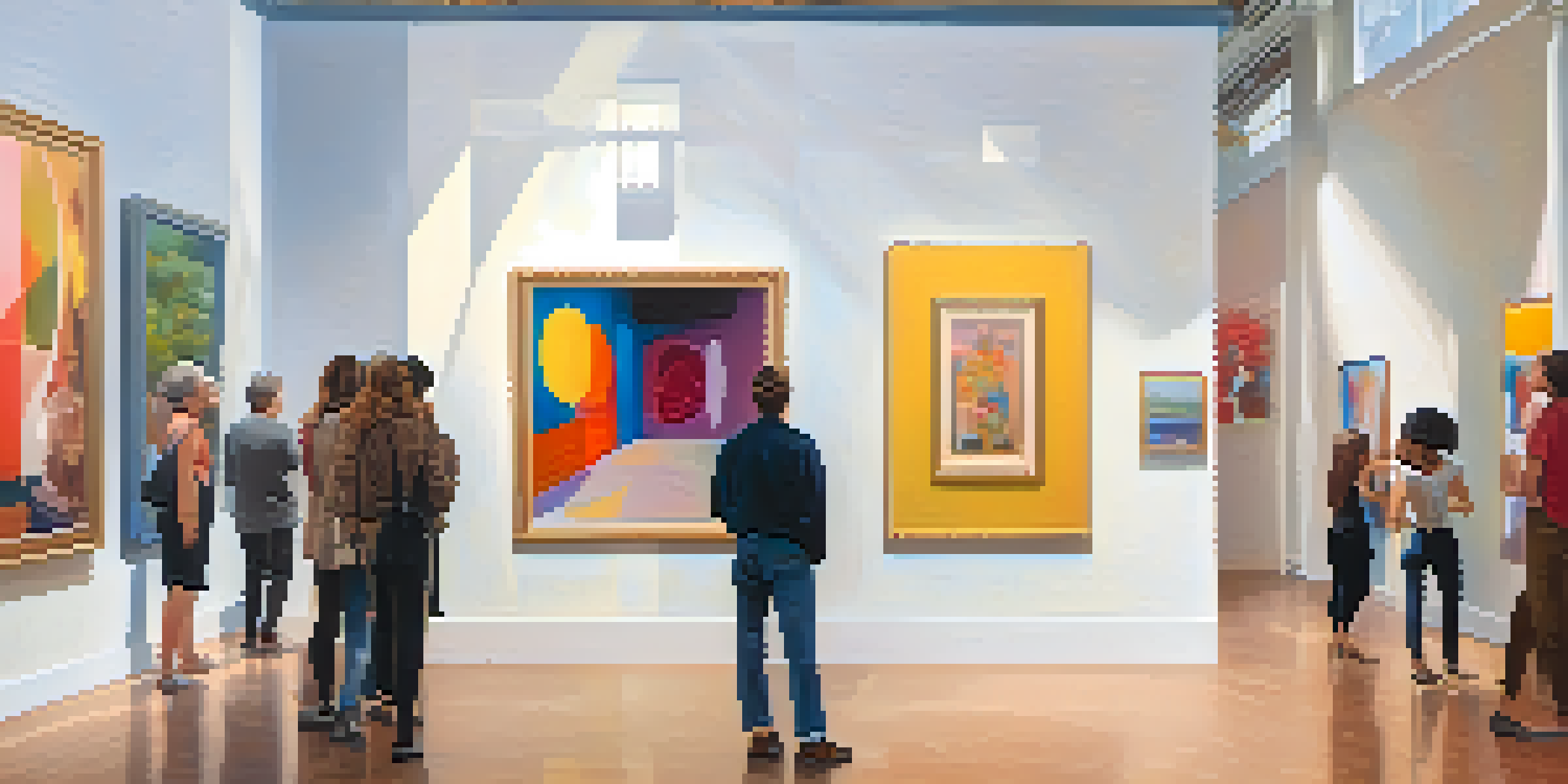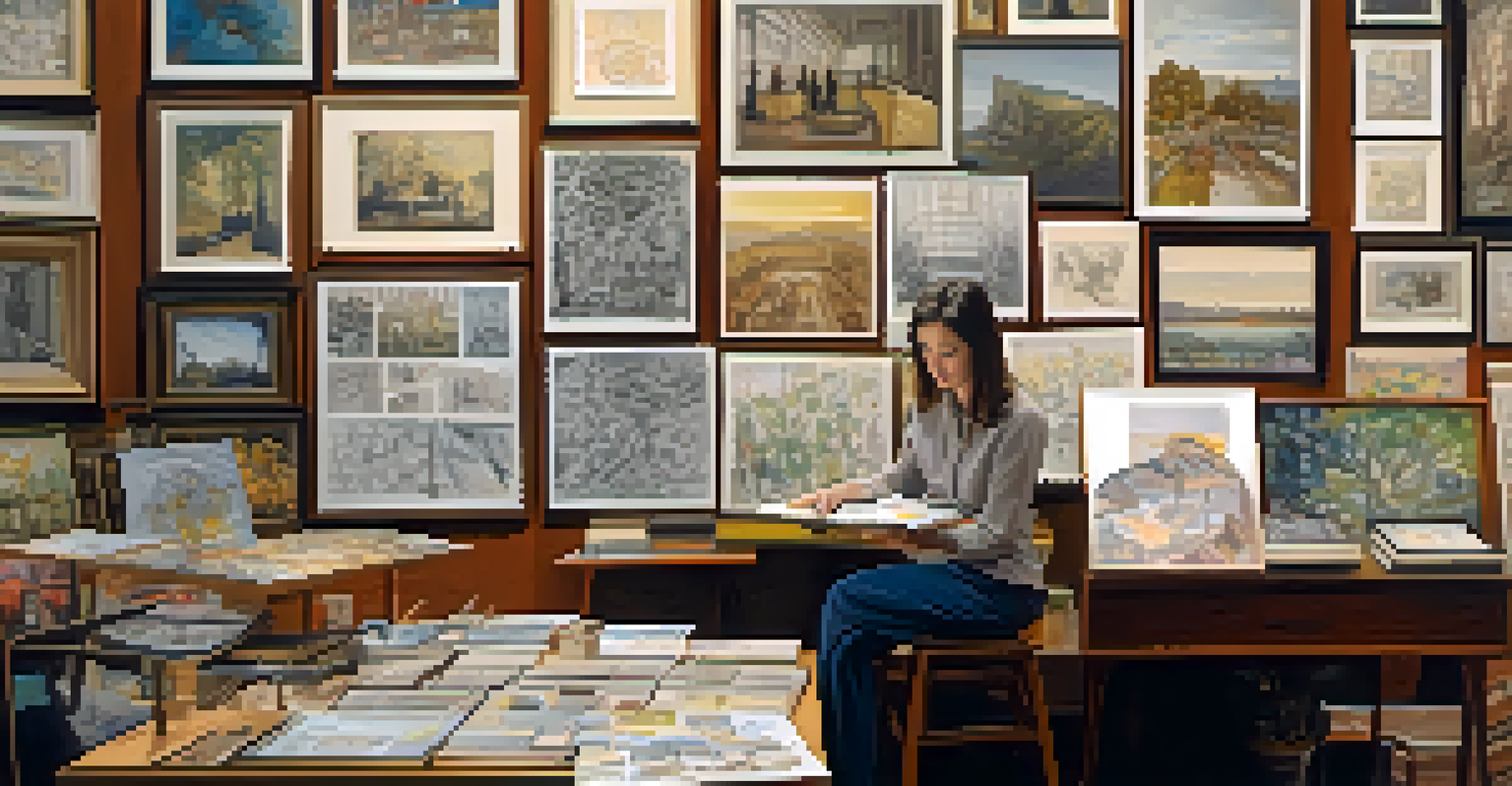The Ethics of Art Exhibitions: Curation and Representation

Understanding the Role of Curation in Art Exhibitions
Curation is more than just choosing artworks; it's about storytelling. A curator acts as a bridge between the artist's vision and the audience's experience. This role requires a keen understanding of both art and the social context in which it exists.
Art is not what you see, but what you make others see.
By selecting specific pieces, curators influence how viewers perceive art, culture, and history. Their choices can elevate marginalized voices or reinforce dominant narratives, highlighting the ethical weight behind their decisions. Thus, curators must navigate these complexities thoughtfully.
In essence, curation shapes the dialogue around art. It’s not merely about aesthetics; it’s about fostering understanding and encouraging critical conversations within society.
The Impact of Representation in Art Exhibitions
Representation in art is crucial as it reflects the diversity of human experience. When exhibitions feature artists from various backgrounds, they enrich the narrative and challenge stereotypes. This inclusivity invites a broader audience to engage with the art.

However, misrepresentation can occur when artists are commodified or their work is presented without context. This often leads to cultural appropriation, where the essence of the artwork is lost or distorted for commercial gain. Curators must be vigilant to avoid such pitfalls.
Curation as Storytelling
Curation is not just about displaying art; it involves crafting narratives that connect the artist's vision with the audience's experience.
Ultimately, representation is about respect and authenticity. By prioritizing accurate and respectful portrayals, curators can create exhibitions that resonate deeply and foster genuine connections among viewers.
Ethical Considerations in Artwork Selection
Selecting artworks for an exhibition goes beyond personal taste; it involves ethical responsibility. Curators must consider the potential impact of their selections on different communities. The goal is to create an inclusive space that honors diverse perspectives.
The role of the curator is to create a space for the art to speak.
This means being aware of the historical context behind artworks and the artists' backgrounds. It also involves questioning whose stories are being told and whether any voices are being silenced. Such reflection can lead to more thoughtful and equitable exhibitions.
In short, ethical selection is about balance. Curators should strive to present a wide range of experiences while being mindful of the implications their choices carry.
Navigating Cultural Sensitivity in Curation
Cultural sensitivity is paramount in the curation process. Curators must be aware of the cultural significance of artworks and understand the nuances involved. This awareness helps in preventing cultural insensitivity and promoting respectful engagement.
Engaging with diverse communities during the planning process can provide invaluable insights. It allows curators to create exhibitions that honor the cultures represented and avoid potential pitfalls related to misinterpretation or exploitation. Collaboration with artists is key.
Importance of Representation
Diverse representation in art exhibitions enriches narratives and fosters a deeper connection by challenging stereotypes and inviting broader engagement.
By prioritizing cultural sensitivity, curators can foster a deeper appreciation for the art and its origins. This approach enhances the viewer's understanding and enriches the overall exhibition experience.
The Responsibility of Curators in Social Contexts
Curators hold a significant responsibility in shaping social narratives through their exhibitions. They have the power to highlight pressing social issues and provoke critical discussions. This responsibility is amplified in times of social unrest or cultural change.
By thoughtfully curating exhibitions that address contemporary issues, curators can inspire action and awareness. They can create a platform for artists who tackle themes like identity, inequality, and climate change, making art a catalyst for social change.
In this way, curators are not just facilitators of art; they are advocates for social dialogue. Their role in navigating these conversations can lead to transformative experiences for both artists and audiences.
The Intersection of Ethics and Audience Engagement
Engaging the audience ethically is a crucial aspect of curation. Curators should consider how their exhibitions resonate with viewers and the messages they convey. An ethical approach fosters dialogue and encourages critical thinking among audiences.
This means creating opportunities for interaction, such as artist talks or panel discussions. Such engagements allow audiences to dive deeper into the themes of the exhibition and understand various perspectives. It transforms passive viewing into active participation.
Ethics in Artwork Selection
Curators bear ethical responsibilities in their selections, ensuring that they honor diverse perspectives and avoid misrepresentation.
Ultimately, ethical audience engagement enriches the cultural experience. It empowers viewers to reflect on their values and beliefs, making art a more impactful medium for personal and social exploration.
Future Directions for Ethical Art Curation
The future of art curation is evolving, with a growing emphasis on ethics. As society becomes more aware of the importance of representation, curators must adapt their practices to meet these expectations. This shift is essential for fostering inclusive and meaningful art experiences.
Emerging technologies, such as virtual reality and social media, also offer new avenues for ethical engagement. Curators can leverage these tools to reach wider audiences and create immersive experiences that challenge traditional exhibition formats.

As we look ahead, the commitment to ethical curation will be crucial. By prioritizing diversity, representation, and community engagement, curators can ensure that art remains a powerful force for reflection and change.